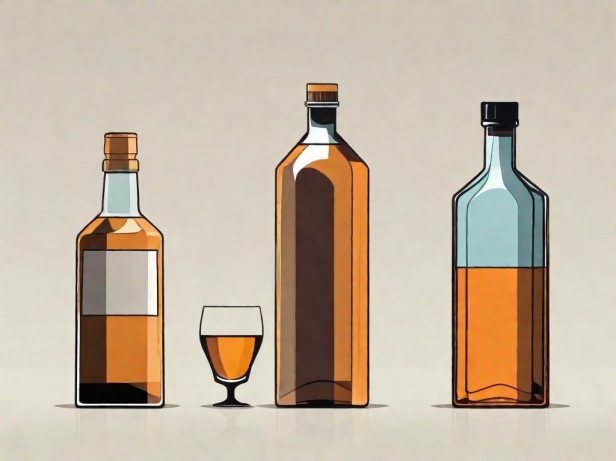Why do some people seem to get drunk faster than others after having just a few drinks? What causes that feeling of tipsiness or dizziness within minutes of taking the first sip? The answers to these common alcohol-related questions lie in the biological pathways that ethanol follows after it is consumed.

On the surface, alcohol intoxication may appear straightforward – drink more ethanol and you become more impaired. However, the sequence of events that occurs after swallowing an alcoholic beverage explains why people exhibit remarkably different degrees of inebriation under the same conditions. From absorption in the gut, distribution through circulation, metabolic breakdown, interaction with receptors, to final elimination, ethanol encounters numerous factors that shape its potency and effects between individuals.
Therefore, by understanding the journey ethanol takes within the body and brain, we can unravel the science behind getting drunk. Examining the molecular mechanisms by which this simple two-carbon molecule travels through the intestines into the blood, modifies neurochemistry, and induces system-wide changes, brings clarity to the variation in alcohol response we see in daily life. Uncovering these biological processes provides insight into why some individuals demonstrate a higher propensity towards intoxication and alcohol use disorders.
Absorption and Metabolism
That feeling of tipsiness or full-on drunkenness after a few drinks is caused by ethanol, a simple compound found in beer, wine, and liquor. Structurally, ethanol is small and simple, allowing it to easily cross cell membranes and bind to receptors throughout the body. This leads to widespread effects and is the reason ethanol can induce intoxication.
After swallowing an alcoholic drink, ethanol is rapidly absorbed from the stomach into the bloodstream through the lining of the stomach and upper small intestine. Absorption occurs most quickly when drinking on an empty stomach, since food in the stomach slows the rate at which ethanol passes through the pyloric sphincter into the small intestine.
Once in the bloodstream, ethanol travels first to the liver, where enzymes break it down through a two-step oxidative process. First, an enzyme called alcohol dehydrogenase (ADH) converts ethanol into acetaldehyde, a toxic and carcinogenic compound. Next, a different enzyme called acetaldehyde dehydrogenase (ALDH) further metabolizes the acetaldehyde into acetate, a relatively harmless compound.
The liver serves as the primary site of ethanol metabolism and elimination. However, the rate of this breakdown determines how much ethanol reaches circulation and travels to the brain and other organs to cause effects throughout the body.
Effects on the Brain
Once ethanol enters the bloodstream and circulation, it soon makes its way to the brain. In the brain, ethanol acts on specific neurotransmitter systems that regulate neuron activity and communication.
One major effect is enhancing the activity of Gamma-aminobutyric acid (GABA), the brain’s primary inhibitory neurotransmitter. Ethanol binding causes more chloride influx through GABA receptors, making neurons less excitable. This suppression of brain cell activity leads to the sedative and motor impairment effects seen with moderate ethanol intake. At very high doses that severely enhance GABA, ethanol can dangerously suppress vital brain functions like respiration.
Ethanol also inhibits the function of glutamate, the brain’s main excitatory neurotransmitter. By blocking glutamate receptors, ethanol reduces neuron firing and brain activity similarly to the GABA effect.
In the reward pathway of the brain, ethanol stimulates dopamine release in an area called the nucleus accumbens. This surge of dopamine creates feelings of pleasure and reward associated with alcohol consumption.
Ethanol also induces the synthesis and release of endorphins in certain brain regions. Binding of endorphins to opioid receptors produces euphoria, decreases anxiety, and gives an overall sense of relaxation – contributing to the enjoyable properties of alcohol intoxication.
Individual Differences
As ethanol is eliminated from the body faster than it is consumed, the feelings of drunkenness subside. However, there are many factors that cause individual differences in how people respond to and experience the effects of ethanol.
For example, women tend to feel the effects of alcohol more strongly than men of the same body weight after consuming equivalent amounts. This results partly from women’s higher percentage of body fat and lower volume of body water. For the same weight, women have less water to distribute ethanol, resulting in higher blood alcohol concentrations.
Genetic differences also lead to varying ethanol metabolism rates. Variants in the liver enzymes alcohol dehydrogenase (ADH) and aldehyde dehydrogenase (ALDH) speed up or slow down the breakdown of ethanol. Those with increased enzyme activity eliminate ethanol faster and are less affected.
Neurotransmitter receptor genetics also alter sensitivity. Variations in GABA, glutamate, dopamine and opioid receptors change tissue response to ethanol binding. This modifies both the rewarding properties of alcohol and the level of impairment.
Repeated ethanol exposure leads to brain adaptations that increase tolerance, reducing the effects of alcohol. However, severe liver damage from chronic heavy alcohol abuse can prevent proper metabolism, lowering tolerance.
So, an individual’s response to alcohol is shaped by a myriad of biological factors. Genetics impact everything from how quickly ethanol is metabolized to receptor sensitivity in the brain. Sex differences lead to variation in blood alcohol levels for the same dose. Enzymes in the liver adapt to break down ethanol faster or slower depending on drinking history. Even past alcohol consumption alters neurotransmitter systems and tolerance. Ultimately, it is the interaction of these genetic and physiological factors that determines the level of intoxication experienced from ingesting ethanol.
This complex interindividual variability helps explain differing propensities towards alcohol use disorders. Some may be more vulnerable to dependence due to increased reward response or lack of negative effects. For others, reduced tolerance keeps intoxication within safer limits. But no two people will feel the exact same effects from drinking equivalent amounts of alcohol. Subtle differences in absorption, distribution, metabolism and brain sensitivity lead to significant variation in susceptibility to problematic drinking behaviors. So while ethanol travels through similar pathways in everyone, the subtleties of its journey dictate that we each respond uniquely based on our biological individuality.

Interesting!
LikeLike